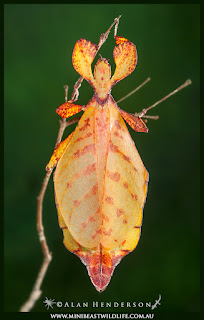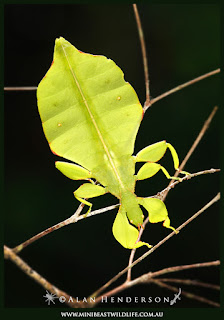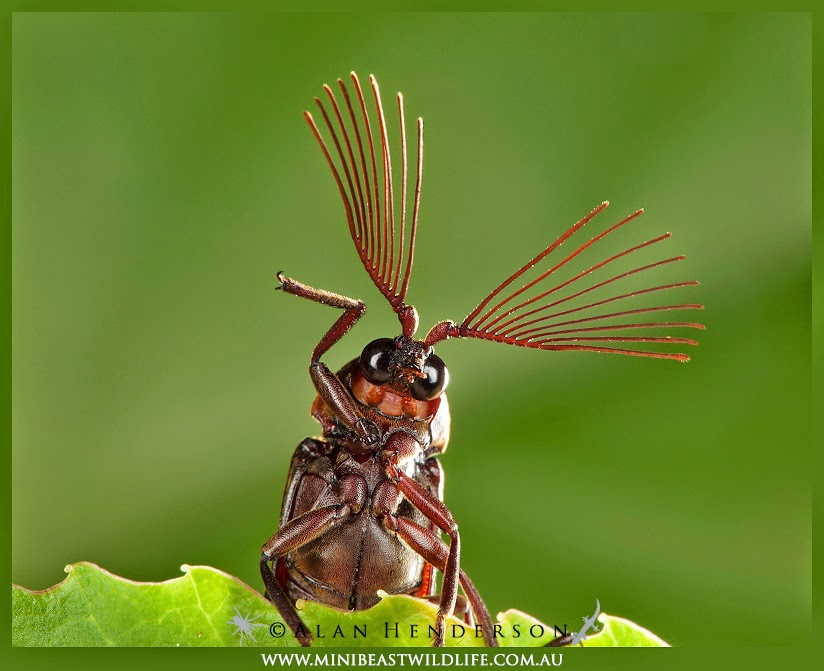Friday, September 25, 2015
How about a quickie at four?
True to their name, these Four o'clock moths (Dysphania numana)) are usually active late in the afternoon, and it is uncanny how many times we have observed them around 4pm. In this case these couple turned up mating at our home at about 4.30pm.
The host plant for these moths is Corky Bark (Carallia brachiata), and the caterpillars are just as spectacular as the moths. See one in this previous post.
Sunday, May 31, 2015
Fantastic Phyllium
Here are some of the Phyllium monteithi Leaf Insects we have been breeding. One of our populations originated from a single female specimen that Gerhard Hillmann and myself happened across after Cylone Ita last year here in Kuranda. Gerhard spotted the adult female sitting upon Golden Penda (Xanthostemon chrysanthus). A rare find as she was only the second female specimen ever found at that point. The first was also found in Kuranda in 2012 on Cape Ironwood (Gossia floribunda). The offspring from the Cyclone Ita female have been kept on Golden Penda and are exhibiting an array of colours. The other main food plant we use is Brush Cherry (Syzygium australe), which is also likely to be a wild food host plant for this species.
 |
| The wild female in the position she was found on Golden Penda. |
 |
| A red-morph adult female |
 |
| The red colouration makes the insect obvious in this image, but would provide good camourflage on some of the rusty red coloured Penda leaves. |
 |
| A female offspring from the wild female above with more red flecks. |
 |
| An large female nymph with some 1st instar nymphs on her back. |
 |
| An adult female on Golden Penda. |
 |
| An all green female raised on Syzygium australe. |
 |
| A brilliant green juvenile female. |
Saturday, January 17, 2015
Amazing antennae
This is Callirhipis cardwellensis (Callirhipidae), a beetle with spectacular antennae. This little guy is one of many species on the move here in north QLD with the onset of the wet season here in Kuranda
Subscribe to:
Posts (Atom)



